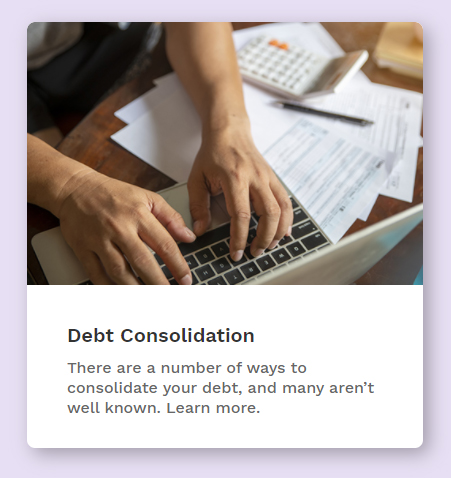The Dangers of Different Types of Consolidation Loans
by Mark Kalinowski
As long time Credit Counsellors will tell you – the best option to address debt is one that is affordable, and that least impacts your credit in a negative way. With this in mind, Counsellors talk at length about ways to consolidate debt through the financial industry. Be warned, while this is sometimes a wonderful option, there are times where it does not make sense.
What to Watch Out for with a Home Owner’s Line of Credit
The cheapest money available is often through a Home Owner’s Line of Credit (HELOC). Cheap is not always best. A major issue with a HELOC is the interest only payments. True, the required payment can be quite small but without discipline, it is a debt paid forever if no additional payments are made toward the principal. As interest rates continue to rise so does the monthly payment on a home equity line of credit.
The Problem Consolidating Debt with Personal Lines of Credit
Personal Lines of Credit (PLOC) are a higher interest option as they are unsecured. Often the interest rate works on a Prime Rate + system. As such, people with excellent credit may have a very low interest rate while those with impaired credit will have a much higher interest rate. Two key points to keep in mind:
- Is the interest rate better than what is are currently paid on other loans? Credit Counsellors will hear a sigh of relief as clients explain that their credit and payments issues are solved as they have been approved for a Line of Credit. That is short lived when it is discovered that the interest rate is higher than some credit cards and the minimum payment will take 65 years to retire the debt.
- Assuming the interest rate is better, will the client focus on paying more than the minimum payment to the line of credit. If they do, will they have the fortitude to resist using it again and again? A line of credit is money available to you when you need it, or want it. Much like a credit card, it can be a great tool or a weapon one uses to impact their financial life.
What to be Careful About When Consolidating with Low Interest Rate Credit Cards
Low interest rate credit cards, especially those with an introductory rate have become very vogue. The idea is to balance transfer all your debt to a near 0% interest rate credit card for a period of 6 months to a year. This is a fantastic strategy if the card can be paid off during the introductory period, and assuming there is no balance transfer fee. The credit card companies are betting against this with good reason as most won’t be paid off.
People suggest they will do a second balance transfer at the end of the promo period to a different low interest rate credit card, but what happens if they cannot be approved? Or if they run debt back up on the high interest rate credit cards. This is not a solution . . . it is a stalling tactic that puts bigger goals and debt freedom on hold.
What to Look Out for with Consolidation Loans
Consolidation Loans are a better option for most as they require a principal payment in addition to an interest payment each month. This provided a set term over which the loan will be repaid. Most will have an interest charge comparable to an unsecured line of credit, but cannot be borrowed against again. This helps ensure that the debt is paid. The major drawback comes in when attempting to fit the payment into the budget. With a limited term and a required interest and principal payment, it can be difficult to find money in the budget to address debt in this manner.
The key to finding success in addressing debt is to:
- Be open to all options
- Understand the cost of interest and fee’s
- Know the required payment and term
- Know what you can afford to pay – the budget is a starting point to finding success!
This is must have knowledge before signing any papers. Even then, seek out impartial advice with a non- profit Credit and Budget Counsellor. Together, review all the information to ensure that the correct steps are taken toward a more manageable financial life.






0 Comments